Related Research Articles
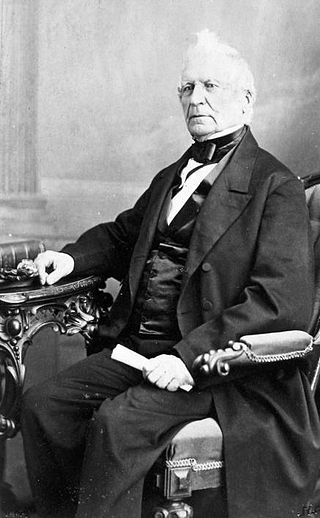
Louis-Joseph Papineau, born in Montreal, Quebec, was a politician, lawyer, and the landlord of the seigneurie de la Petite-Nation. He was the leader of the reformist Patriote movement before the Lower Canada Rebellion of 1837–1838. His father was Joseph Papineau, also a politician in Quebec. Papineau was the eldest of eight children and was the grandfather of the journalist Henri Bourassa, founder of the newspaper Le Devoir.
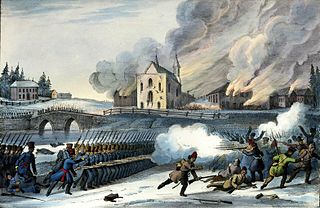
The Lower Canada Rebellion, commonly referred to as the Patriots' War in French, is the name given to the armed conflict in 1837–38 between rebels and the colonial government of Lower Canada. Together with the simultaneous rebellion in the neighbouring colony of Upper Canada, it formed the Rebellions of 1837–38.

This section of the Timeline of Quebec history concerns the events in British North America relating to what is the present day province of Quebec, Canada between the time of the Constitutional Act of 1791 and the Act of Union 1840.

Wolfred Nelson was the mayor of Montreal, Quebec, from 1854 to 1856.
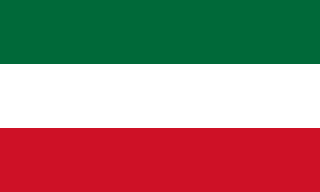
The Parti canadien or Parti patriote was a primarily francophone political party in what is now Quebec founded by members of the liberal elite of Lower Canada at the beginning of the 19th century. Its members were made up of liberal professionals and small-scale merchants, including François Blanchet, Pierre-Stanislas Bédard, John Neilson, Jean-Thomas Taschereau, James Stuart, Louis Bourdages, Denis-Benjamin Viger, Daniel Tracey, Edmund Bailey O'Callaghan, Andrew Stuart and Louis-Joseph Papineau.
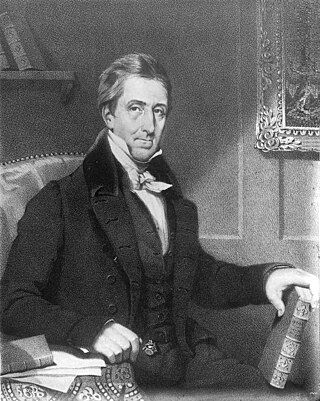
Denis-Benjamin Viger was a 19th-century politician, lawyer, and newspaper publisher in Lower Canada, who served as joint premier of the Province of Canada for over two years. A leader in the Patriote movement, he was a strong French-Canadian nationalist, but a social conservative in terms of the seigneurial system and the position of the Catholic church in Lower Canada.

Augustin-Norbert Morin was a Canadien journalist, lawyer, politician, and rebel in Lower Canada. He was a member of the Legislative Assembly of Lower Canada in the 1830s, as a leading member of the Parti patriote. Although he participated in the Lower Canada Rebellion, the British authorities concluded his conduct did not warrant a charge of high treason. After the Rebellion, he entered politics in the Province of Canada, eventually becoming joint premier of the Province. Retiring from politics due to health concerns, Morin was appointed to the bench. He was one of the commissioners who codified the law of Lower Canada, producing the Civil Code of Lower Canada which stayed in force for over a century.
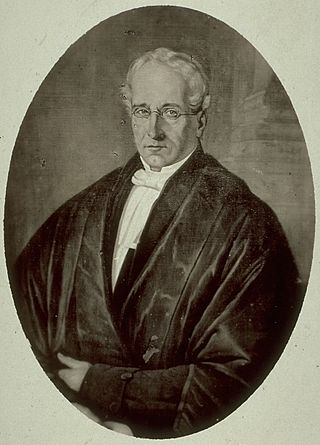
Austin Cuvillier was a businessman and political figure in Lower Canada and Canada East. He was a successful Canadien businessmen, unusual when most businessmen in Lower Canada were British. He also was a member of the Legislative Assembly of Lower Canada for twenty years, as a member for the Parti canadien, which tended to oppose the policies of the British-appointed governors. As a result, he served as a bridge between the conservative business community, and the more radical Parti canadien, although he finally broke with the Parti canadien prior to the Lower Canada Rebellion of 1837–1838.

Étienne Parent was a Canadian journalist, politician and government official. A French-Canadian nationalist, he wrote extensively on political theory and governance during the 1820s and 1830s in various newspapers, particularly Le Canadien, of which he was editor. He was attracted to theories of constitutional governance based on the British constitution, and opposed annexation to the United States. Born to farming parents, he spent most of his adult life in the French-Canadian political and social elites.

James Leslie was a Canadian businessman and political figure. An immigrant from Scotland in 1804, he became a successful Montreal businessman and was one of the founders of the Bank of Montreal.
Louis Lacoste was a notary and political figure in Lower Canada and then Canada East, Province of Canada. He was a member of the Legislative Assembly of Lower Canada, supporting Louis-Joseph Papineau and the Parti patriote. During the Lower Canada Rebellion he was imprisoned without trial, for his activities in the lead-up to the Rebellion. Following the creation of the Province of Canada, he was a member of the new Legislative Assembly for several years, and then a member of the Legislative Council. He was one of the original members of the Senate of Canada from 1867 to 1878.
Marcus Child was a businessman and political figure in Lower Canada (nowQuebec). An immigrant from the United States, he became a prosperous businessman. He was involved in improving local education in the Eastern Townships, an area which had recently opened for colonial settlement. He represented the Stanstead Township of Lower Canada, first in the Legislative Assembly of Lower Canada, later in the Legislative Assembly of the Province of Canada. He supported the Parti patriote in the 1830s, and fled to exile in the United States for a short time after the Lower Canada Rebellion in 1837.
André Jobin was a notary and political figure in Lower Canada and Canada East.
Jacob De Witt was a businessman, banker and political figure in Lower Canada and Canada East, Province of Canada. Beginning in the hardware trade, he expanded into steamship transportation on the River St. Lawrence and then banking. He was elected to the Legislative Assembly of Lower Canada and generally supported the Parti patriote, but did not participate in the Lower Canada Rebellion of 1837. After the union of Lower Canada and Upper Canada into the Province of Canada, he was elected to the new Legislative Assembly. He initially supported the reform measures of Louis-Hippolyte LaFontaine, but gradually became more radical, ending his political career as member of the Parti rouge and calling for the voluntary annexation of Canada to the United States. He continued in business, particularly banking, until his death in 1859.

Louis-Michel Viger was a lawyer, banker, businessman, seigneur and political figure in Lower Canada, and then in Canada East in the Province of Canada.
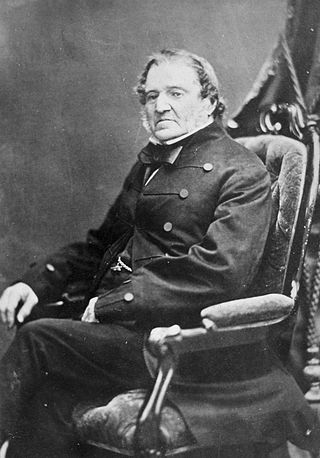
Frédéric-Auguste Quesnel,, was a lawyer, businessman and politician in Lower Canada. He was a member of the Legislative Assembly and the Executive Council of Lower Canada. Following the union of the Canadas, he was elected to the Legislative Assembly of the Province of Canada and later was appointed to the Legislative Council. Throughout his career he was a political moderate, seeking greater political power for French-Canadians under British rule, but also supporting the British connection generally. Condemned by the Patriotes as a vendu ("sell-out") in the Lower Canada Rebellion, in 1860 he was elected President of the Saint-Jean-Baptiste Society of Montreal.
René-Joseph Kimber was a physician and political figure in Lower Canada and Canada East, in the Province of Canada. He represented Trois-Rivières in the Legislative Assembly of Lower Canada, as a member of the Parti patriote, although he opposed the use of force in the Lower Canada Rebellion. After the creation of the Province of Canada, which he opposed, he was the member for the district of Champlain in the Legislative Assembly of the Province of Canada. He was briefly a member of the Legislative Council, prior to his death in 1843.

The patriotes movement was a political movement that existed in Lower Canada from the turn of the 19th century to the Patriote Rebellion of 1837 and 1838 and the subsequent Act of Union of 1840. The partisan embodiment of the movement was the Parti patriote, which held many seats in the Legislative Assembly of Lower Canada.

The Patriote flag was used by the Patriote movement in Lower Canada between 1832 and 1838.
Jean-Baptiste-Isaïe Noël was a seigneur, physician and political figure in Lower Canada. He represented Lotbinière in the Legislative Assembly of Lower Canada from 1830 to 1838, and again in the Lotbinière electoral district in the Legislative Assembly of the Province of Canada from 1841 to 1844.
References
- ↑ Dagenais, Maxime (September 6, 2017). "92 Resolutions". The Canadian Encyclopedia (online ed.). Historica Canada.
- ↑ Journals of the House of Assembly of Lower Canada, Session 1834, vol. 43, p. 337 (February 21, 1837).